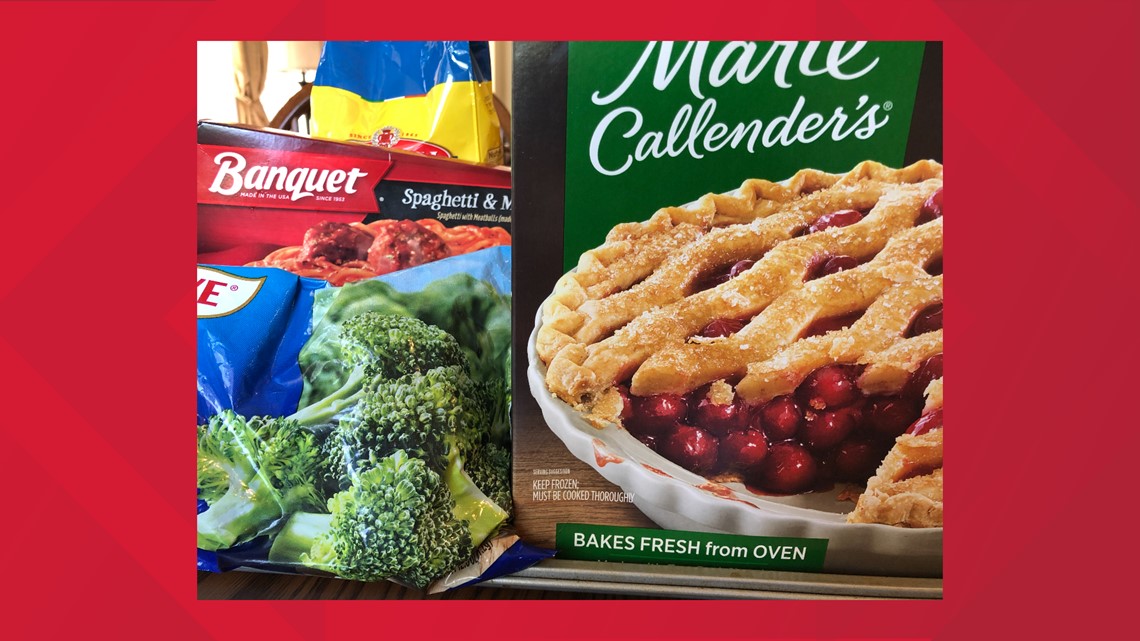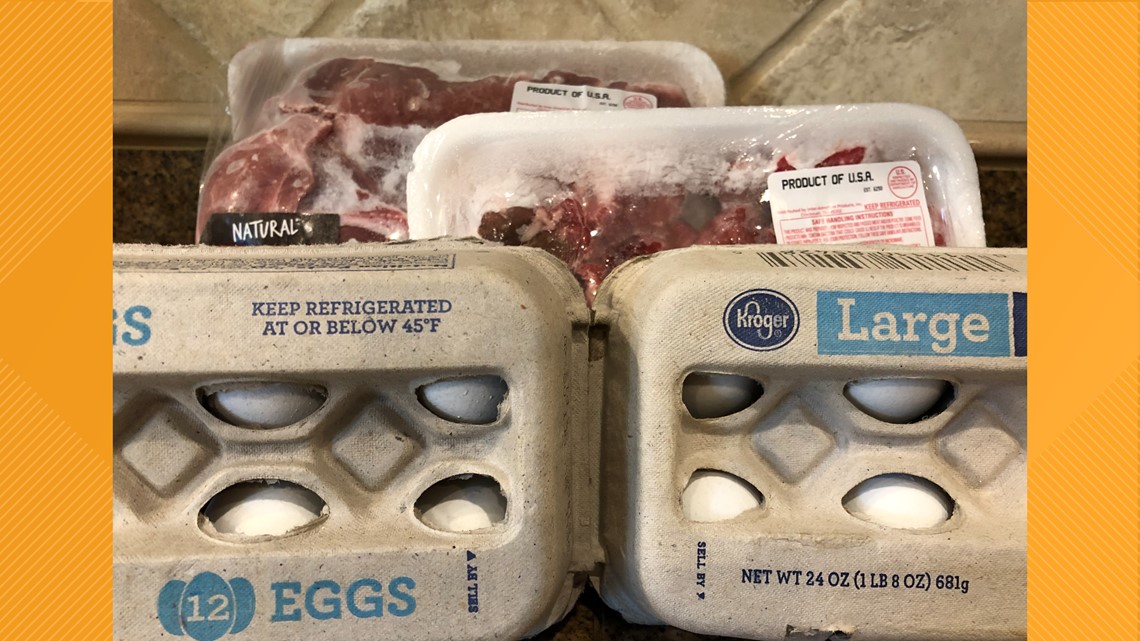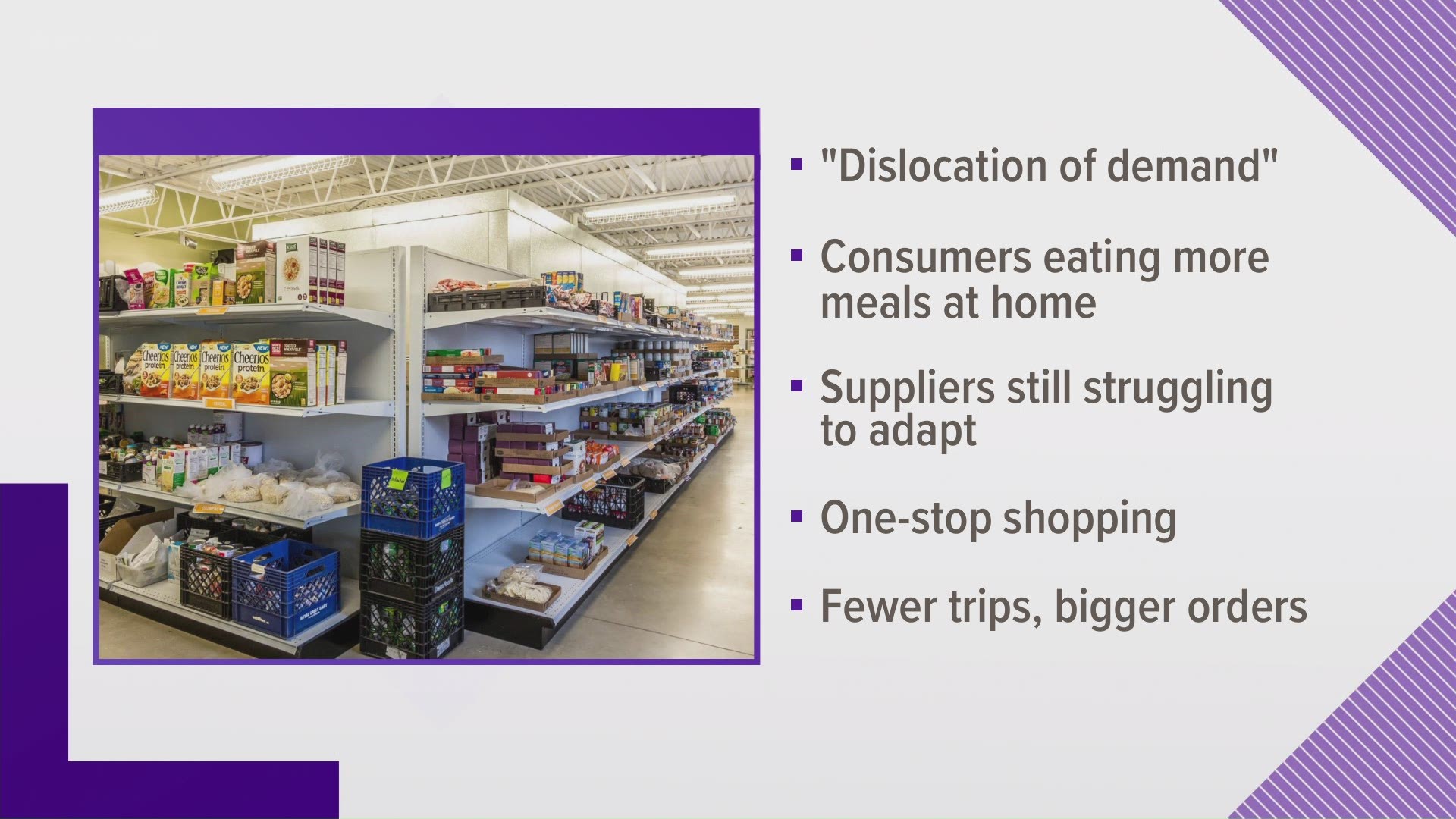COLORADO, USA — Prices of some grocery store items are starting to decline for the first time since the start of the COVID-19 pandemic, according to a professor at Colorado State University.
Professor Dawn Thilmany at CSU's Agricultural and Resource Economics Department said prices of fruit and vegetables, for example, are declining.
"Fruits and vegetables are the one bright spot. Their prices are low," Thilmany said. "The freezers are full of very cost-effective frozen berries and vegetables."
Thilmany said frozen food sales have exploded during the pandemic, adding that falling prices have led to "freezer-stuffing" by consumers.
Sales of frozen foods were up 40% during the 11 weeks ending May 16, which translates to $15.5 billion, according to Neilsen data.
The leaders, Thilmany said, are Marie Callender pies ($5), entrees from PF Changs (whole meals are about $12 for a family) and Bertolli, Banquet and Birds eye products of every description.




So many people are filling freezers, Thilmany said that Home Depot, Lowes and Best Buy struggle to keep them the appliances stock.
Freezer sales are up 195% from the same period last year, Nielsen date show.
Thilmany said if you find a desired freezer product, count yourself lucky.
"They can't keep freezers and refrigerators in stock because everybody is buying an additional one or a new one, probably with the idea that if they are going to be eating at home more they need more space to store it in," Thilmany said.
She also said Campbell Soup Company, based in Camden, N.J., is having its biggest year ever.
Prices of meat and eggs remain higher. Thilmany said the supply chain for eggs is still adjusting to the "grocery" model, moving away from the restaurant and hotel chains.


She added that waiting for meat prices to moderate is also taking more time than expected.
"The predictions are that meat prices are going to come down and in fact be back to normal-ish price levels probably by February or March," Thilmany said. "That, of course, is yet to be seen. And so much of this depends on how COIVD plays out once we get into those winter months where outbreaks in some of those manufacturing plants might really make a difference."
She also outlined two other big problems with the food chain. One is called "Dislocation of Demand" —which refers to how many consumers continue to eat more meals at home and fewer meals at restaurants. Suppliers are still adapting their package sizes and their relationships with groceries to accommodate more consumers. But, she said, it's a very hard turn.
The other is the rise of "One-Stop-Shopping." Because the grocery store is still a somewhat risky trip for many, many shoppers load up during their trips. That empties shelves faster, and grocery store suppliers are still adjusting to that. The hoarding has eased, but the big orders are still coming through, Thilmany said.
SUGGESTED VIDEOS: Senior Source

